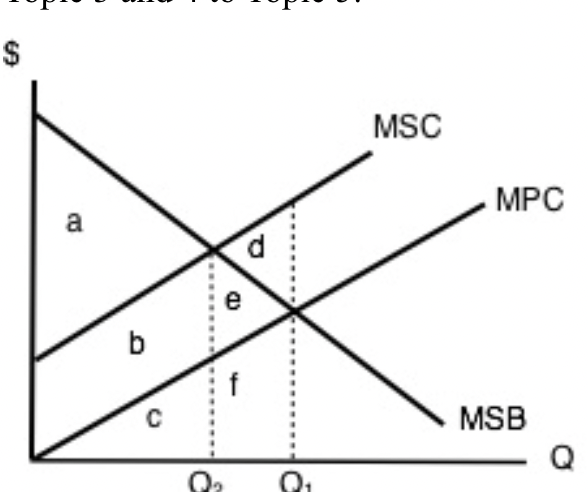|
Female Foeticide In India
Female foeticide in India is the abortion of a female foetus outside of legal methods. A research by Pew Research Center based on Union government data indicates foeticide of at least 9 million females in the years 2000–2019. The research found that 86.7% of these foeticides were by Hindus (80% of the population), followed by Muslims (14% of the population) with 6.6%, and Sikhs (1.7% of the population) with 4.9%. The research also indicated an overall decline in preference for sons or daughter in the time period. The natural sex ratio is assumed to be between 103 and 107 males per 100 females, and any number above it is considered suggestive of female foeticide. According to the decennial Indian census, the sex ratio in 0 to 6 age group in India has risen from 102.4 males per 100 females in 1961, to 104.2 in 1980, to 107.5 in 2001, to 108.9 in 2011. [...More Info...] [...Related Items...] OR: [Wikipedia] [Google] [Baidu] |
Abortion
Abortion is the early termination of a pregnancy by removal or expulsion of an embryo or fetus. Abortions that occur without intervention are known as miscarriages or "spontaneous abortions", and occur in roughly 30–40% of all pregnancies. Deliberate actions to end a pregnancy are called induced abortion, or less frequently "induced miscarriage". The unmodified word ''abortion'' generally refers to induced abortion. Common reasons for having an abortion are birth-timing and limiting family size. Other reasons include maternal health, an inability to afford a child, domestic violence, lack of support, feelings of being too young, wishing to complete an education or advance a career, or not being able or willing to raise a child conceived as a result of rape or incest. When done legally in industrialized societies, induced abortion is one of the safest procedures in medicine. Modern methods use medication or surgery for abortions. The drug mifepristone (aka RU-4 ... [...More Info...] [...Related Items...] OR: [Wikipedia] [Google] [Baidu] |
Sex-selective Abortion
Sex-selective abortion is the practice of terminating a pregnancy based upon the predicted sex of the infant. As the practice overwhelmingly targets female fetuses, sex-selective abortion often specifically refers to female-selective abortion. Sex-selective abortion is closely linked to female infanticide, and is recognized by many human rights organizations as an act of violence against women. The selective abortion of female fetuses is most common where male children are valued over female children, especially in parts of East Asia and South Asia (particularly in countries such as People's Republic of China, India and Pakistan), as well as in the Caucasus, Western Balkans, and to a lesser extent North America. Based on the third National Family and Health Survey, results showed that if both partners, mother and father, or just the father, preferred male children, sex-selective abortion was more common. In cases where only the mother prefers sons, this is likely to result i ... [...More Info...] [...Related Items...] OR: [Wikipedia] [Google] [Baidu] |
Transaction Payments As A Service
Transaction payments as a service (TPaaS) is a phrase used to describe a Software as a service, SaaS-based methodology which allows platforms to become their own merchant platforms and provide merchant services directly. This is distinct from payments as a service which aggregates multiple payment technologies into one platform. TPaaS layer The TPaaS layer allows organisations to become their own merchant provider, this facilitates functionality that is normally only available to merchant aggregators such as commission splits, merchant of record and instant onboarding. See also * Payments as a service * Electronic bill payment * E-commerce payment system * Electronic commerce * Payment service provider References {{Reflist Payment systems ... [...More Info...] [...Related Items...] OR: [Wikipedia] [Google] [Baidu] |
Pareto Efficiency
In welfare economics, a Pareto improvement formalizes the idea of an outcome being "better in every possible way". A change is called a Pareto improvement if it leaves at least one person in society better off without leaving anyone else worse off than they were before. A situation is called Pareto efficient or Pareto optimal if all possible Pareto improvements have already been made; in other words, there are no longer any ways left to make one person better off without making some other person worse-off. In social choice theory, the same concept is sometimes called the unanimity principle, which says that if ''everyone'' in a society (strict inequality, non-strictly) prefers A to B, society as a whole also non-strictly prefers A to B. The Pareto frontier, Pareto front consists of all Pareto-efficient situations. In addition to the context of efficiency in ''allocation'', the concept of Pareto efficiency also arises in the context of productive efficiency, ''efficiency in prod ... [...More Info...] [...Related Items...] OR: [Wikipedia] [Google] [Baidu] |
Dowry Prohibition Act
The dowry system in India refers to the durable goods, cash, and real or movable property that the bride's family gives to the groom, his parents and his relatives as a condition of the marriage. Dowry is called "दहेज" in Hindi and as ''جہیز'' in Urdu. Traditionally, dowry served as the inheritance for the daughter, as her relationship was seen as severed with her parents at the time of marriage, and is sometimes negotiated as consideration or a 'status equalizer' between the marrying families, often as a means upward mobility. However, the system can put great financial burden on the bride's family. In some cases, asks for dowry has led to crimes against women, ranging from emotional abuse and injury to even deaths. The payment of dowry has long been prohibited under specific Indian laws including the Dowry Prohibition Act 1961 and Sections 304B and 498A of the Indian Penal Code. These laws have long been criticized as being ineffective, as well as prone to misuse. ... [...More Info...] [...Related Items...] OR: [Wikipedia] [Google] [Baidu] |
Spillover Effect
In economics, a spillover is a positive or a negative, but more often negative, impact experienced in one region or across the world due to an independent event occurring from an unrelated environment. For example, externalities of economic activity are non-monetary spillover effects upon non-participants. Odors from a rendering plant are negative spillover effects upon its neighbors; the beauty of a homeowner's flower garden is a positive spillover effect upon neighbors. The concept of spillover in economics could be replaced by terminations of technology spillover, R&D spillover and/or knowledge spillover when the concept is specific to technology management and innovation economics. Moreover, positive or negative impact often creates a social crisis or a shock in the market like booms or crashes. In the same way, the economic benefits of increased trade are the spillover effects anticipated in the formation of multilateral alliances of many of the regional nation states: e ... [...More Info...] [...Related Items...] OR: [Wikipedia] [Google] [Baidu] |
Women In Government
In many countries, women have been Political representation, underrepresented in the government and different institutions. , women were still underrepresented, but were increasingly being List of elected and appointed female heads of state, elected to be heads of state and government. As of October 2019, the global participation rate of women in national-level parliaments was 24.5%. In 2013, women accounted for 8% of all national leaders and 2% of all presidential posts. Furthermore, 75% of all female prime ministers and presidents took office in the two decades through to 2016. Women may face a number of challenges that affect their ability to participate in political life and become political leaders. Several countries explored measures that could increase women's participation in government at all levels, from the local to the national and international. Women in government office Women have been notably in fewer numbers in the executive branch of government. The gender gap ... [...More Info...] [...Related Items...] OR: [Wikipedia] [Google] [Baidu] |
Public Good (economics)
In economics, a public good (also referred to as a social good or collective good)Oakland, W. H. (1987). Theory of public goods. In Handbook of public economics (Vol. 2, pp. 485–535). Elsevier. is a commodity, product or service that is both non-excludable and non-rivalrous and which is typically provided by a government and paid for through taxation. Use by one person neither prevents access by other people, nor does it reduce availability to others, so the good can be used simultaneously by more than one person. This is in contrast to a common good, such as wild fish stocks in the ocean, which is non-excludable but rivalrous to a certain degree. If too many fish were harvested, the stocks would deplete, limiting the access of fish for others. A public good must be valuable to more than one user, otherwise, its simultaneous availability to more than one person would be economically irrelevant. Capital goods may be used to produce public goods or services that are "...ty ... [...More Info...] [...Related Items...] OR: [Wikipedia] [Google] [Baidu] |
Female Infanticide
Female infanticide is the deliberate killing of newborn female children. Female infanticide is prevalent in several nations around the world. It has been argued that the low status in which women are viewed in patriarchal societies creates a bias against females. The modern practice of sex-selective abortion is also used to regulate gender ratios. In 1978, anthropologist Laila Williamson, in a summary of data she had collated on how widespread infanticide was, found that infanticide had occurred on every continent and was carried out by groups ranging from hunter gatherers to highly developed societies, and that, rather than this practice being an exception, it has been commonplace. The practice has been documented among the Indigenous peoples of Australia, Northern Alaska and South Asia, and Barbara Miller argues the practice to be "almost universal", even in the Western world. Miller contends that female infanticide is commonplace in regions where women are not employed in agr ... [...More Info...] [...Related Items...] OR: [Wikipedia] [Google] [Baidu] |
Lineage (anthropology)
In anthropology, a lineage is a unilineal descent group that traces its ancestry to a demonstrably shared ancestor, known as the apical ancestor. Lineages are formed through relationships traced either exclusively through the maternal line ( matrilineage), paternal line ( patrilineage), or some combination of both ( ambilineal). The cultural significance of matrilineal or patrilineal descent varies greatly, shaping social structures, inheritance patterns, and even rituals across societies. Etymology From Middle English ''linage'', from Old French ''linage'', from ''ligne'', from -4; we might wonder whether there's a point at which it's appropriate to talk of the beginnings of French, that is, when it wa ... ''linage'', from ''ligne'', from Latin ''linea'' (“line”); equivalent to ''line'' + ''-age''. Characteristics A lineage is a descent group characterized by unilineal descent. This means that lineage membership is determined by tracing ancestry through either a ... [...More Info...] [...Related Items...] OR: [Wikipedia] [Google] [Baidu] |
Obstetric Ultrasonography
Obstetric ultrasonography, or prenatal ultrasound, is the use of medical ultrasonography in pregnancy, in which sound waves are used to create real-time visual images of the developing embryo or fetus in the uterus (womb). The procedure is a standard part of Pregnancy, prenatal care in many countries, as it can provide a variety of information about the health of the mother, the timing and progress of the pregnancy, and the health and development of the embryo or fetus. The International Society of Ultrasound in Obstetrics and Gynecology (ISUOG) recommends that pregnant women have routine Obstetrics, obstetric ultrasounds between 18 weeks' and 22 weeks' Gestational age (obstetrics), gestational age (the anatomy scan) in order to confirm pregnancy dating, to measure the fetus so that growth abnormalities can be recognized quickly later in pregnancy, and to assess for congenital malformations and Multiple birth, multiple pregnancies (twins, etc). Additionally, the ISUOG recommends th ... [...More Info...] [...Related Items...] OR: [Wikipedia] [Google] [Baidu] |









